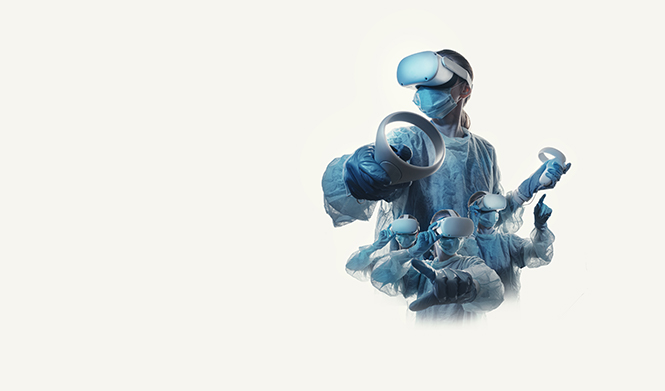Technological innovation is one of the many facets of neurosurgery that drew me to the field. And I am not the only one. At our recent “match panel” for younger medical students, three of the six recently matched neurosurgery residents, including myself, cited technology as critical in attracting them to the field. A small, but meaningful, sample size.
My interest in technology and its relation to medicine started before my interest in neurosurgery, before I was in medical school. In my final year of college, a former research mentor of mine suggested I stop by Case Western’s campus during winter break to see some “cool new technology” he was working on. It was the original version of the augmented reality headset, the Microsoft HoloLens, and its future uses were still to be determined. One idea was to use this augmented reality platform as the main device for teaching anatomy; I eagerly offered to see that idea to fruition.
In collaboration with Microsoft, our team was successful and the HoloLens is now used as the primary device to teach anatomy at the medical school. While learning how to cut on cadavers can be a valuable educational experience, augmented reality allows medical students to learn the anatomy faster and just as well.1 It also allows us to see the anatomy in ways not possible in a cadaver, such as the 3D path of white matter tracks of the brain, reconstructed from scan data. Through the HoloLens, we can visualize the anatomy from all different angles and planes – a skill that is critical for neurosurgeons.
I was first exposed to virtual reality in neurosurgery as a second-year medical student via a neurosurgery elective that exposed us to the virtual reality platform, Surgical Theater. I saw how real patient pathology could be uploaded and reviewed in detail and in 3D. As part of the course, we were taught the basics of neurosurgical procedures and unique surgical anatomy. We were able to “try out” the basic steps of a laminectomy and better appreciate the location and orientation of a PCOM aneurysm.
I came into medical school interested in pursuing a surgical career. From my experience with augmented reality, I already knew I had an interest in anatomy and working with my hands. Throughout my second year, I found the physiology and anatomy of the nervous system most interesting. I signed up for the neurosurgical elective because I was already gravitating toward a career in neurosurgery. Still, seeing the application of cutting-edge technology solidified that decision. I could see all my interests coalescing in the field I have come to know and love.
Since then, I have seen virtual and augmented reality used in neurosurgery in various ways that include surgical planning, patient education and intraoperative guidance.2,3
Historically, there are people who worry about technology replacing other aspects of life; however, I like to think of it as an enhancement to what already exists. Virtual reality in neurosurgery should be no exception. Virtual and augmented reality have already been incredible tools in my learning and they are still evolving. As these platforms become increasingly more powerful, more portable and cheaper, they will be further integrated into surgical training and planning, as well as medical and patient education – I look forward to contributing to that transition.
References
- Jeremy S. Ruthberg, Galen Tingle, Lisa Tan, Lauren Ulrey, Sue Simonson-Shick, Rebecca Enterline, Henry Eastman, Jeffrey Mlakar, Robert Gotschall, Erin Henninger, Mark A. Griswold & Susanne Wish-Baratz (2020) Mixed reality as a time-efficient alternative to cadaveric dissection, Medical Teacher, 42:8, 896-901, DOI: 1080/0142159X.2020.1762032
- Molina, C. A., Theodore, N., Ahmed, A. K., Westbroek, E. M., Mirovsky, Y., Harel, R., Orru’, E., Khan, M., Witham, T., & Sciubba, D. M. (2019). Augmented reality–assisted pedicle screw insertion: a cadaveric proof-of-concept study, Journal of Neurosurgery: Spine SPI, 31(1), 139-146. Retrieved May 2, 2021, from https://thejns.org/spine/view/journals/j-neurosurg-spine/31/1/article-p139.xml
- https://www.hopkinsmedicine.org/news/articles/johns-hopkins-performs-its-first-augmented-reality-surgeries-in-patients








